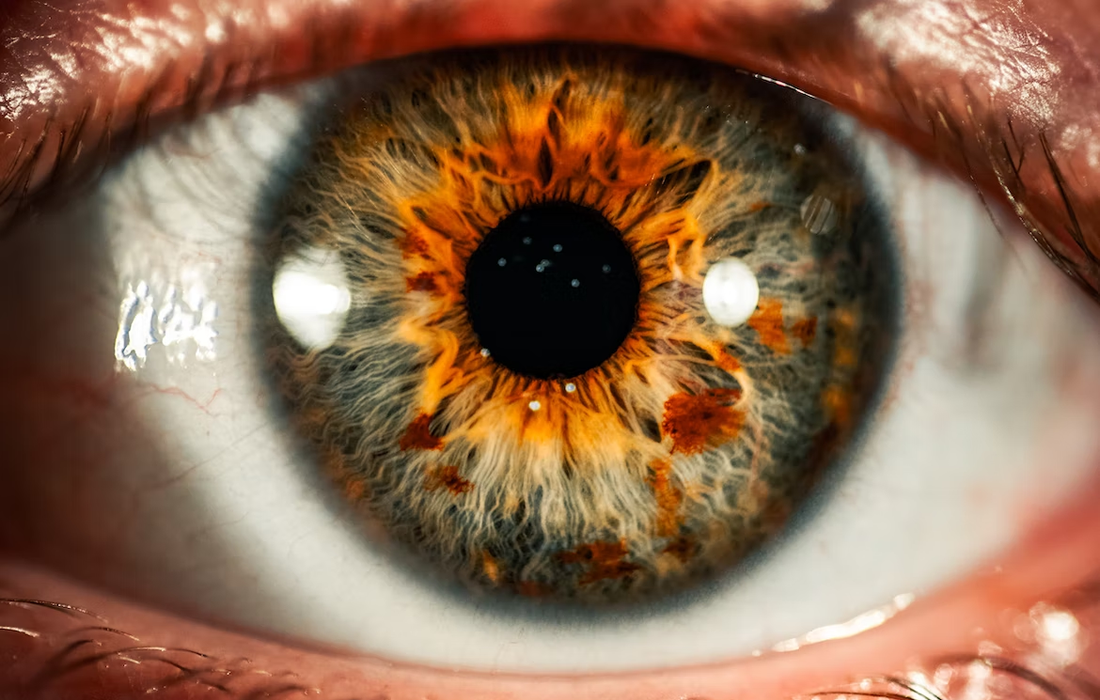Stem Cell Therapy for Specific Conditions
Stem Cell-Derived Retinal Patch for Age-Related Macular Degeneration
Age-related macular degeneration (AMD or ARMD) is the most common cause of irreversible vision loss in the developed world. AMD is associated with the presence of drusen, without visual loss early in the disease. However, the disease often slowly progresses over years to retinal atrophy and central retinal degeneration with associated loss of central vision.
The early form of dry AMD is characterized by small to intermediate sized drusen, without significant vision loss. The intermediate form of dry AMD is associated with loss of retinal pigment epithelium (RPE) and the overlying retinal layers (atrophy), with loss of contrast sensitivity, loss of reading speed, and difficulty with adaptation to changing light conditions. The advanced, nonexudative form of AMD is characterized by the presence of atrophy that can be associated with severe central visual-field loss.
Greater than 90% of patients diagnosed with AMD have nonexudative (dry) AMD; nonexudative AMD is generally associated with much slower (over decades), progressive visual loss compared with exudative (wet) AMD, which is generally associated with more rapid (over months) visual loss. However, patients with the more advanced cases of dry AMD can have as profound a visual loss as those with exudative AMD.
AMD usually manifests after age 50 years. The disease is often bilateral and may be asymmetrical, and affected patients report a significant history of disease in family members who have lived to later years of their life.
Signs and symptoms
Signs and symptoms of dry AMD include the following:
- Difficulty with night vision and with changing light conditions (specifically, changes in Amsler grid self-evaluation and trouble with reading)
- Slow adjustment to indoor light after having been in the bright outdoors
- Straight lines appearing broken or distorted (eg, power lines appear crooked, window shades and slats appear crooked, letters appear missing while reading)
- Visual fluctuation (ie, some days, vision is poor; other days, vision appears improved)
- Difficulty with reading and making out faces
- Metamorphopsia (distortion of visual images)
Treatment
No approved medications for the treatment of dry age-related macular degeneration (AMD or ARMD) are available.
Evidence shows that patients with early or moderate dry age-related macular degeneration (AMD or ARMD) should consume adequate quantities of antioxidants, including vitamin A, vitamin E, zinc, and lutein.
It is possible that the drusen present in dry AMD can be ameliorated by the performance of a very light grid laser therapy. The Complications of Age-Related Macular Degeneration Prevention Trial (CAPT), a National Eye Institute–sponsored study examining the visual benefit from such treatment, has concluded. Preliminary results indicate that focal laser therapy in a light grid pattern causes drusen resorption and improved visual acuity in the short term. However, the procedure was associated with a slightly higher risk of developing choroidal neovascularization in the short term compared with no laser treatment.
What’s new about the stem cell therapy for this condition?
A treatment in development since 2013, the California Project to Cure Blindness — Retinal Pigment Epithelium 1 (CPCB-RPE1) patch consists of a monolayer of human stem cell-derived RPE cells cultured on an ultrathin membrane of biologically inert parylene. The goal for this patch is to replace deteriorating cells in the retinas of those who have age-related macular degeneration, one of the leading causes of blindness worldwide for people over 50.
The researchers have made strides with the patch since its inception, guiding it through clinical trials for use with the dry form of AMD. The first sets of trials concentrated on establishing the safety of the patch and collecting any data on its effectiveness.
Early results were promising: Of the 15 patients in the initial cohort, four demonstrated improved vision in the treated eye, while five experienced a stabilization of their vision. But the team had other questions that couldn’t necessarily be answered by proxy. Had the cells maintained their identity and thus, their function? Was the patch still in place and were the donor cells surviving? Were there any signs of immune rejection, a common and serious concern for any patient receiving an implant?
Thanks to the generosity of one patient in the trials, the group would get their chance to find out. Through a careful process of staining and immunoreactivity testing, the team determined that the cells were in fact RPE donor cells, confirming that the cells on the patch hadn’t migrated and that the cells were oriented in the optimal, polarized position.
In addition, the team found that after two years, the presence of the patch hadn’t triggered other conditions associated with implantation, such as the aggressive formation of new blood vessels or scar tissue that could cause a detachment of the retina. Importantly, they also found no clinical sign of the inflammation that can indicate an immune response to the foreign cells even after the patient was taken off immunosuppressants two months post-implantation.
This information shown in this study may pave a new treatment for decline of vision in the future. Nonetheless more studies are needed with large samples of clinical trials to establish the risk and benefit in the long-term.
SOURCE:
Amir H. Kashani, Jane S. Lebkowski, David R. Hinton, Danhong Zhu, Mohamed A. Faynus, Sanford Chen, Firas M. Rahhal, Robert L. Avery, Hani Salehi-Had, Clement Chan, Neal Palejwala, April Ingram, Wei Dang, Chih-Min Lin, Debbie Mitra, Juan Carlos Martinez-Camarillo, Jeff Bailey, Cassidy Arnold, Britney O. Pennington, Narsing Rao, Lincoln V. Johnson, Dennis O. Clegg, Mark S. Humayun (fEBRUARY 3, 2022). Survival of an HLA-mismatched, bioengineered RPE implant in dry age-related macular degeneration. Stem Cell Reports. Retrieved from: https://pubmed.ncbi.nlm.nih.gov/35120620/
Raj K Maturi, MD; Chief Editor: Andrew A Dahl, MD, FACS (July 16, 2021). Nonexudative (Dry) Age-Related Macular Degeneration (AMD). Medscape. Retrieved from : https://emedicine.medscape.com/article/1223154-overview
IMAGE:
Photo by Colin Lloyd on Unsplash

